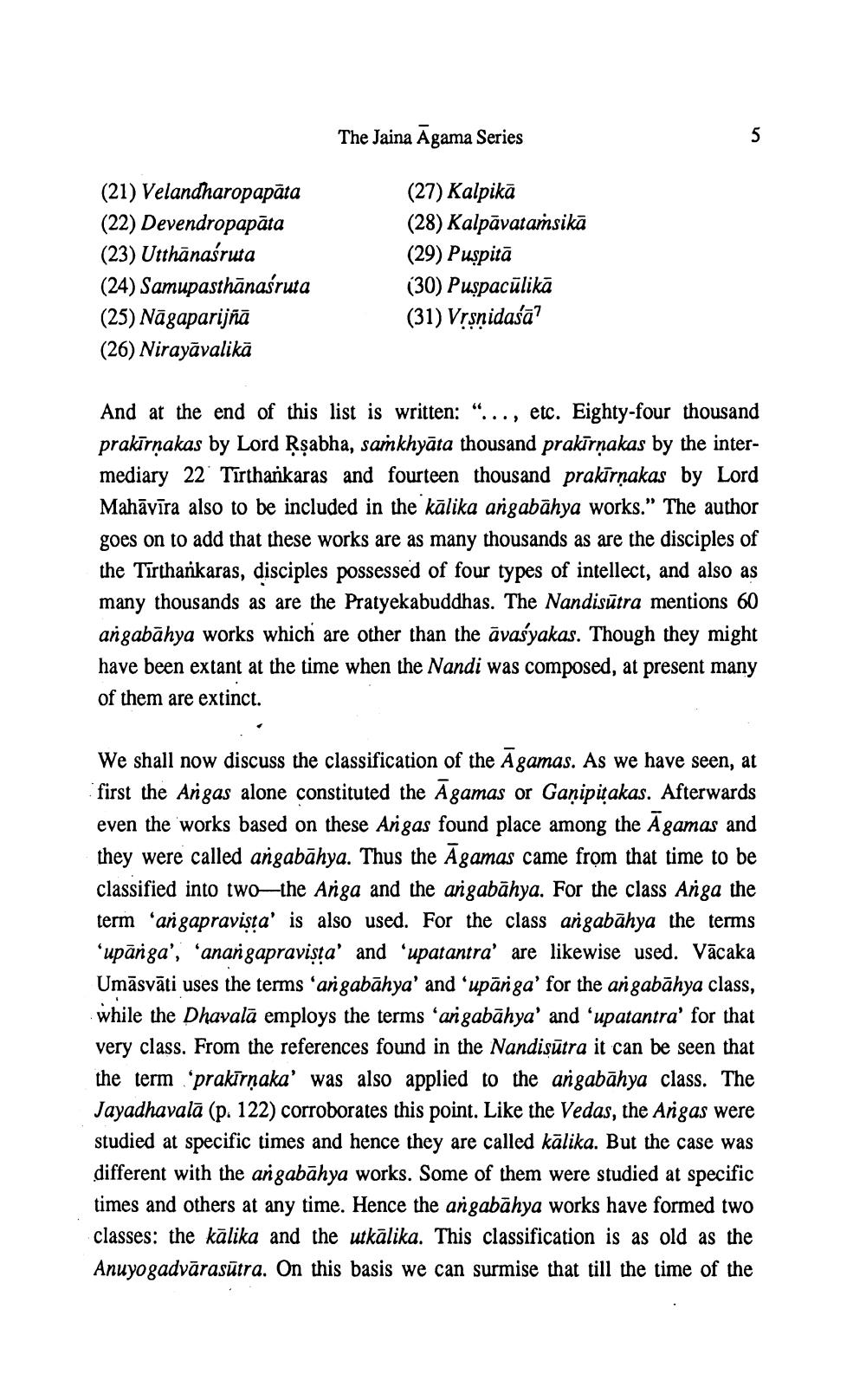Book Title: Jaina Agama Series Author(s): Jambuvijay Publisher: Jambuvijay View full book textPage 5
________________ The Jaina Agama Series (21) Velandharopapāta (22) Devendropapāta (23) Utthānaśruta (24) Samupasthānaśruta (25) Nāgaparijñā (26) Nirayāvalikā (27) Kalpikā (28) Kalpāvatamsikā (29) Puspitā (30) Puspacülikā (31) Vrsņidašā? And at the end of this list is written: "..., etc. Eighty-four thousand prakīrņakas by Lord şşabha, saskhyāta thousand prakīrņakas by the intermediary 22 Tirthankaras and fourteen thousand prakīrņakas by Lord Mahāvīra also to be included in the kālika angabāhya works." The author goes on to add that these works are as many thousands as are the disciples of the Tirtharkaras, disciples possessed of four types of intellect, and also as many thousands as are the Pratyekabuddhas. The Nandisutra mentions 60 angabāhya works which are other than the āvasyakas. Though they might have been extant at the time when the Nandi was composed, at present many of them are extinct. We shall now discuss the classification of the Āgamas. As we have seen, at first the Angas alone constituted the Āgamas or Ganipitakas. Afterwards even the works based on these Arigas found place among the Āgamas and they were called angabāhya. Thus the Āgamas came from that time to be classified into two—the Anga and the angabāhya. For the class Anga the term 'angapravista' is also used. For the class argabāhya the terms ‘upānga', 'anangapravista' and 'upatantra' are likewise used. Vācaka Umāsvāti uses the terms 'angabāhya' and 'upānga' for the angabāhya class, while the Dhavalā employs the terms 'argabāhya' and 'upatantra' for that very class. From the references found in the Nandisātra it can be seen that the term 'prakīrņaka' was also applied to the angabāhya class. The Jayadhavalā (p. 122) corroborates this point. Like the Vedas, the Angas were studied at specific times and hence they are called kālika. But the case was different with the angabāhya works. Some of them were studied at specific times and others at any time. Hence the angabāhya works have formed two classes: the kālika and the utkalika. This classification is as old as the Anuyogadvārasūtra. On this basis we can surmise that till the time of thePage Navigation
1 ... 3 4 5 6 7 8 9 10 11 12
